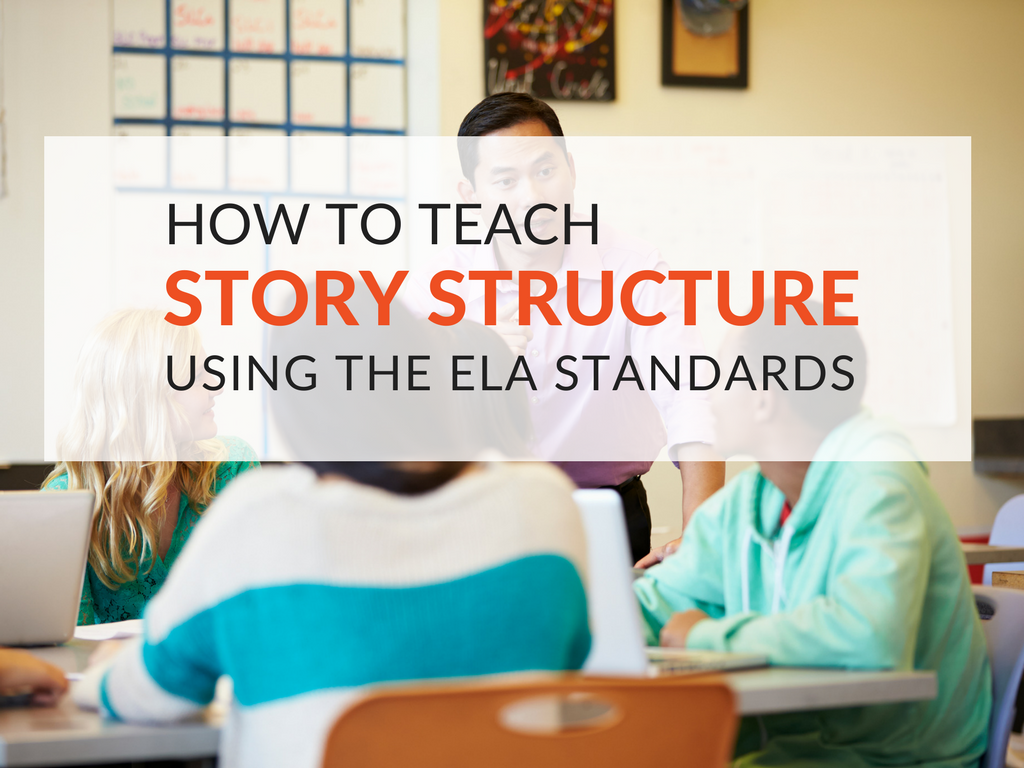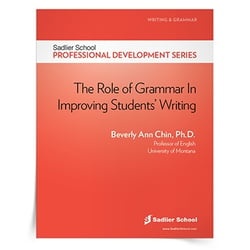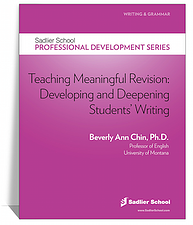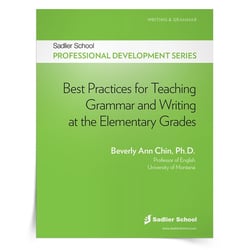May 23, 2017 ELA PD - Literacy, ELA K-5, ELA Focus - Reading, ELA 6-8, ELA Resources - Tip Sheets, ELA Focus - Writing, ELA PD - Grammar Writing, Core Grammar
How to Design Lessons for Teaching Story Structure with the CCSS
By: Beverly Ann Chin, Ph.D.
The organizer of the Boston Marathon designed the course with a starting line, middle course design, and finish line. The craft behind a story can be compared to designing a race.

Every story must have a beginning, middle, and end.
Understanding story structure helps students quickly diagnose and remedy plot problems. The structure of a story helps students understand where they are starting so that they understand where they end.
Teachers create curricula and lessons to help students master reading as a form of thinking, learning, and communicating. Designing reading instruction that meets the needs, abilities, and interests of individual students is no longer enough; teachers must also familiarize themselves with and teach to the state and local standards.
Before diving into teaching story structure, teachers should reference the English Language Arts Standards.
THE COMMON CORE STATE STANDARDS (CCSS) FOR ENGLISH LANGUAGE ARTS
Within the CCSS, the English Language Arts Standards are formally titled “College and Career Readiness Anchor Standards for English Language Arts & Literacy in History/Social Studies, Science, and Technical Subjects.”
This title conveys the importance of literacy instruction across the curriculum and at all grade levels. While English Language Arts teachers play a major role in literacy education, other subject area teachers must support and share responsibility for students’ literacy learning.
ENGLISH LANGUAGE ARTS STANDARDS ORGANIZATION
The English Language Arts Standards are organized into four Anchor Standards: Reading, Writing, Speaking and Listening, and Language.
Each Anchor Standards elaborates on the most important literacy skills and understanding that students are expected to master in English Language Arts and in the content areas of history/social studies, science, and technical subjects. A common numbering system for the Standards shows how students’ English Language Arts abilities should develop across the grades and content areas.
At every grade level, the Reading Standards address literature, informational text, and foundational skills. Under each standard there are four key topics in the Anchor Standards for reading: key ideas and details, craft and structure, integration of knowledge of ideas, and range of reading and level of text complexity.
At specific grade levels (or grade-level bands), these Anchor Standards describe in greater detail the end-of-year expectations for students. The full text of the CCSS for English Language Arts Standards and grade-level expectations is available at www.corestandards.org.
In conjunction with the Writing Standards, Language Standards, and the Speaking and Listening Standards, the Reading Standards lay out the developmental growth in literacy expected for students as they progress from kindergarten to high school graduation.
The English Language Arts are not meant to be checklists. Rather, the Standards should be considered as complementary and interconnected goal statements.
For example, in order to craft and understand some types of stories, students need to be able to cite textual evidence (key ideas and details), determine the meaning of words (craft and structure), integrate information (integration of knowledge of ideas), and read and comprehend literary nonfiction (range of reading and level of text complexity).
HOW DO THE CCSS HELP TEACHERS DESIGN LESSONS FOR READERS?
The Anchor Standards for Reading define the literacy expectations students need to meet as they progress from grades K through 12.
The Standards enable teachers to evaluate the various elements of the reading curriculum in English Language Arts and other subject areas, especially history/social studies, science, technical subjects, and the humanities.
For each reading unit, teachers can identify the key ideas and details, craft and structure, integration of knowledge of ideas, and range of reading and level of text complexity. Teachers can use the school’s curriculum chart (also known as a curriculum map) to record their major reading assignments and to list specific reading subgenres, such as literary fiction, memoir, or reflections on learning. Teachers can also indicate the time frame for the reading assignments.
Because the Standards focus on the essential expectations for every student, the Standards do not dictate a specific curriculum, and they do not describe each type of reading.
As teachers review their reading projects and assignments, they may find important units of study that do not fit neatly into the CCSS key ideas and details, craft and structure, integration of knowledge of ideas, and range of reading and level of text complexity.
Many English Language Arts teachers offer a unit or a course around a text such as Hamlet or The Catcher in the Rye. The unit includes a frame to get started. For example, before beginning to read ask students to complete the Used To, Then, But, So, And format to capture their thinking. It looks like this:
I used to (think, believe, worry about)
________________________________________,
then ______________________________________, but
_________________________, so now I know
____________________________________ and
_________________________.
Teachers can use this graphic organizer again and again throughout the course of a story to show understanding of characters and story development.
IN SUMMARY
By using the Standards to review curriculum, English Language Arts and other subject area teachers can design reading projects to strengthen the balance and distribution of reading opportunities for their students within and across the grade levels.
Teachers can use the Common Core State Standards to guide their instruction when teaching story structure. All stories have a beginning, middle, and end. When students use the Used To, Then, But, So, And format, they can show their growth in thinking, learning, and communicating across time.
EBOOKS BY DR. BEVERLY CHIN:
|
|








